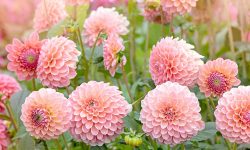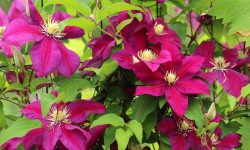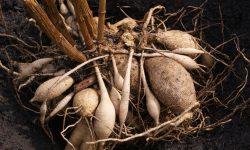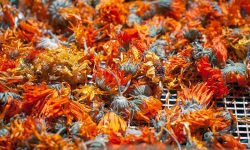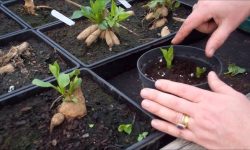Bougainvillea is one of the most popular and vibrant flowering plants known for its brilliant, colorful bracts that can instantly transform any garden or outdoor space. With its dramatic bursts of pink, purple, red, orange, or white, bougainvillea brings a tropical flair that attracts gardeners worldwide. However, encouraging this plant to bloom consistently and abundantly requires an understanding of its natural growing habits and providing the right care.
In this article, we will explore simple but effective tips on how to make bougainvillea bloom. Whether you’re a beginner or experienced gardener, these insights will help you cultivate a healthy, flowering bougainvillea that thrives year after year.
Understanding Bougainvillea Blooming Behavior
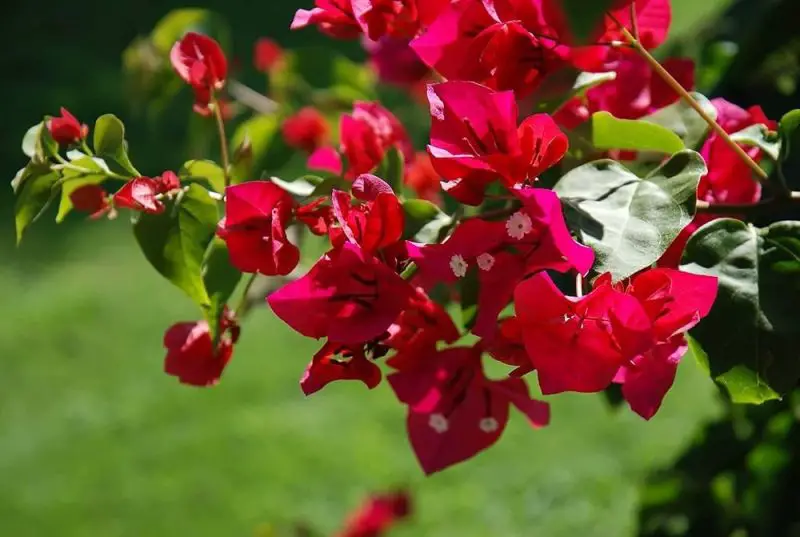
Before diving into care tips, it’s important to understand how bougainvillea blooms naturally. The colorful “flowers” you see on bougainvillea are not actually flowers but specialized leaves called bracts. The true flowers are small, tubular, and usually white or cream-colored, located at the center of the bracts. The vibrant bracts are what give bougainvillea its stunning appearance.
Bougainvillea tends to bloom on mature wood, meaning that the plant needs to develop strong branches before it can produce abundant flowers. It also prefers warm, sunny conditions and relatively dry soil during its blooming phase. Knowing this helps gardeners avoid common mistakes like overwatering or pruning at the wrong time, which can hinder flowering.
Providing Ample Sunlight for Maximum Blooms
One of the most critical factors in making bougainvillea bloom is light exposure. Bougainvillea thrives in full sun, requiring at least five to six hours of direct sunlight each day. Without sufficient sunlight, the plant may produce lush foliage but very few flowers.
Plant your bougainvillea in the sunniest spot available, ideally where it can soak up the morning and afternoon sun. This sunlight encourages the plant to produce the energy it needs for flowering. In cooler climates, giving the plant even more sun exposure can boost flowering potential.
If grown indoors or in containers, placing bougainvillea near a south-facing window or supplementing with grow lights can help mimic its natural sun requirements. Remember, too little light is one of the main reasons for poor blooming.
Watering Wisely to Encourage Flowering
While bougainvillea needs water to survive, overwatering can be detrimental to its blooming ability. Bougainvillea is drought-tolerant and prefers slightly dry soil when it is preparing to bloom. Excessive moisture encourages foliage growth but suppresses flower production.
The key is to water deeply but infrequently, allowing the soil to dry out somewhat between waterings. During the growing season, water your plant thoroughly when the top few inches of soil feel dry, but avoid keeping the soil soggy. Well-draining soil is essential to prevent root rot and promote healthy root growth.
As the plant enters its blooming phase, slightly reducing watering frequency can stimulate stress that encourages flower production. However, avoid letting the plant become too dry, as severe drought can weaken it and reduce flowering overall.
Fertilizing for Vibrant and Abundant Blooms
Proper fertilization supports the energy requirements for bougainvillea to bloom profusely. Using the right fertilizer in the correct amounts can make a significant difference in flower production.
Bougainvillea benefits from balanced fertilizers that provide nitrogen, phosphorus, and potassium. However, phosphorus is particularly important for flowering, so fertilizers with a higher middle number (such as 10-30-10) can be especially effective.
Apply fertilizer every four to six weeks during the growing and blooming season to promote strong growth and vibrant bracts. Avoid over-fertilizing with nitrogen-rich formulas, as this encourages leaf growth at the expense of flowers.
Organic amendments like compost or well-rotted manure can also enrich the soil naturally and improve moisture retention while feeding the plant.
Pruning Techniques to Stimulate New Growth and Flowers
Pruning is an important care practice that directly influences bougainvillea’s blooming cycle. Pruning helps remove dead or weak branches, promotes airflow, and encourages the growth of new flowering shoots.
The best time to prune bougainvillea is after the main flowering period, typically in late winter or early spring. Cut back the plant by about one-third, focusing on removing leggy stems and shaping the plant. This stimulates new branch growth, which will produce next season’s flowers.
Light pruning during the growing season can also encourage continuous blooming by removing spent flowers and trimming back excessive growth. Be cautious not to over-prune, as bougainvillea blooms on new wood, so cutting too much can delay flowering.
Managing Soil Conditions for Healthy Root Development
Healthy roots are essential for bougainvillea to bloom abundantly. The plant prefers slightly acidic to neutral soil with good drainage. Heavy clay soils or waterlogged conditions can hinder root function and reduce flowering.
Improving soil drainage by incorporating sand or perlite helps create an ideal environment for root health. If planting in containers, choose pots with drainage holes and use a well-draining potting mix.
Maintaining consistent soil moisture without oversaturation supports root growth. Avoid letting the soil dry out completely for prolonged periods, as this stresses the plant.
Regular soil testing and amending soil pH if necessary ensure that the plant can absorb nutrients efficiently, supporting robust growth and flowers.
Protecting Bougainvillea from Pests and Diseases
Pests and diseases can weaken bougainvillea and negatively impact its ability to bloom. Common pests include aphids, spider mites, and caterpillars, which feed on leaves and stems, causing damage.
Regularly inspecting your bougainvillea for signs of infestation is essential. Early detection allows prompt treatment, usually with insecticidal soap or neem oil, which are effective and safe options.
Diseases such as root rot and fungal leaf spots are often linked to overwatering or poor airflow. Ensuring proper watering practices and pruning to increase airflow helps reduce these risks.
Keeping your bougainvillea healthy and stress-free by managing pests and diseases supports its natural blooming cycle.
Seasonal Care to Maximize Blooming Potential
Adapting your care routine based on seasonal changes helps bougainvillea maintain its blooming vigor year after year.
During the warmer months, the plant is in its active growth and flowering phase. This is when consistent sunlight, moderate watering, and regular fertilizing are most critical.
As temperatures drop in the fall and winter, growth slows, and the plant enters a resting phase. During this time, reduce watering and avoid fertilizing. Protect bougainvillea from frost and cold drafts, which can damage buds and reduce future blooms.
In colder regions, growing bougainvillea in containers allows you to move the plant indoors or to sheltered areas during winter, ensuring survival and continued blooming.
Encouraging Bougainvillea Bloom Indoors or in Containers
Growing bougainvillea indoors or in containers requires extra attention to mimic outdoor conditions for flowering.
Choosing a large enough container with excellent drainage is vital. Use a high-quality potting mix designed for flowering plants.
Indoor bougainvillea needs bright light, preferably direct sunlight from south- or west-facing windows. If natural light is insufficient, supplemental grow lights can provide the intensity needed for blooms.
Water carefully to avoid waterlogging and maintain moderate humidity by placing a humidity tray or using a humidifier nearby.
Regular pruning, fertilizing, and rotating the plant periodically help maintain balanced growth and flowering indoors.
Troubleshooting Common Issues That Prevent Blooming
Several factors can prevent bougainvillea from blooming despite proper care. Identifying these issues early helps correct the problem and restore flowering.
Excessive nitrogen fertilization is a common mistake that promotes leafy growth but suppresses flowers. Switching to a fertilizer with higher phosphorus levels can rebalance nutrient intake.
Insufficient sunlight, especially for indoor plants, is another leading cause of poor blooming. Increasing light exposure or using grow lights can remedy this.
Overwatering or poor drainage leads to root stress and disease, inhibiting bloom development. Adjusting watering habits and improving soil conditions helps plants recover.
Improper pruning timing or over-pruning can remove flower buds, delaying or preventing blooms. Follow recommended pruning schedules to avoid this.
FAQs about How to Make Bougainvillea Bloom
Why Is My Bougainvillea Not Blooming?
Bougainvillea may not bloom due to insufficient sunlight, overwatering, or excessive nitrogen fertilizer. Ensuring full sun and proper watering encourages flowering.
How Much Sunlight Does Bougainvillea Need to Bloom?
Bougainvillea requires at least five to six hours of direct sunlight daily to produce abundant blooms.
When Is the Best Time to Prune Bougainvillea?
The best time to prune is after the main flowering period, typically in late winter or early spring, to encourage new growth and flowers.
What Fertilizer Helps Bougainvillea Bloom?
Fertilizers with higher phosphorus content, such as 10-30-10, promote flowering and vibrant bracts.
Can Bougainvillea Bloom Indoors?
Yes, with sufficient bright light and proper care, bougainvillea can bloom indoors, especially when grown in containers near sunny windows or under grow lights.
Conclusion: Achieving Beautiful Bougainvillea Blooms Year After Year
Making bougainvillea bloom consistently is an achievable goal with the right knowledge and care. By providing ample sunlight, managing water wisely, fertilizing appropriately, and pruning correctly, gardeners can enjoy stunning displays of vibrant bracts that brighten any garden or indoor space.
Healthy soil, pest management, and adapting seasonal care routines further support sustained flowering. Whether growing bougainvillea outdoors or indoors, these simple tips will help your plant thrive and reward you with brilliant blooms year after year.

